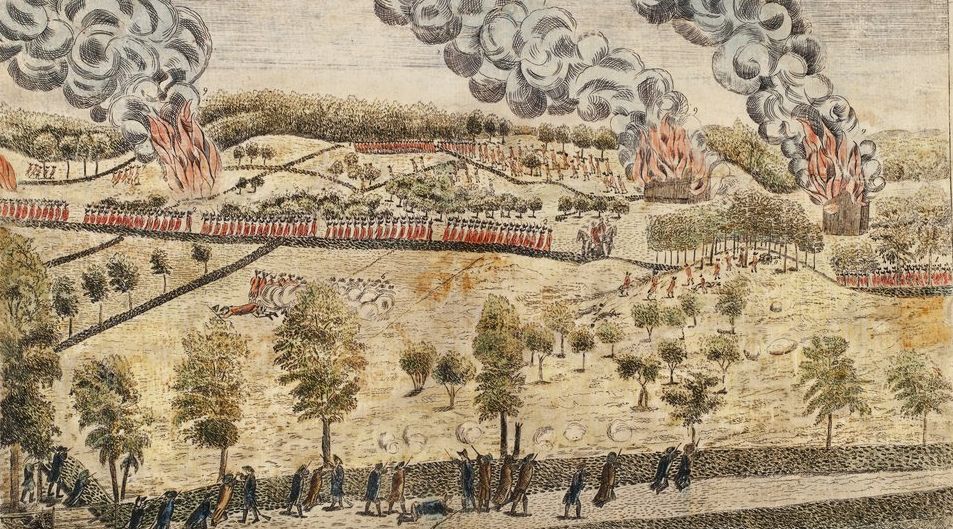Authors:
Historic Era: Era 3: Revolution and the New Nation (1754-1820s)
Historic Theme:
Subject:
Spring 2025 | Volume 70, Issue 2


Authors:
Historic Era: Era 3: Revolution and the New Nation (1754-1820s)
Historic Theme:
Subject:
Spring 2025 | Volume 70, Issue 2
Editor's Note: Michael Ruderman is an author who frequently lectures on New England history to community groups and historical societies. He earned a degree in history at Harvard College.
It was planned as a simple expedition to Concord “to arrest and imprison the principal actors & abettors in the Provincial Congress.” But the raid became a day-long running battle as nearly four thousand Colonial troops from across eastern Massachusetts confronted 1,700 Royal infantry and marines retreating back to Boston.
What transpired in the town of Menotomy along the way shocked participants on both sides of the fighting. Today the name of Menotomy is little remembered outside its location in Arlington, Massachusetts. It appears as a footnote, if cited at all, in standard histories of the American Revolution. Most modern studies focus on the outbreak of the war itself and give it just a few paragraphs. There isn’t a Menotomy town green or common to visit today; technically, Menotomy’s common was four miles to the east, in the heart of its mother town of Cambridge.

Eighteenth century Menotomy was a village of four to five hundred farmers, millers, tavern keepers and their families. It grew up along the Concord road (now Massachusetts Avenue) from high ground known as “the foot of the rocks” in the west near Lexington, to Cambridge and Charlestown in the east. The town was incorporated in 1807 as West Cambridge, losing its original Indian name, and renamed as Arlington sixty years later.
The Concord road through Menotomy follows the course of Mill Brook for about three miles. Its swift flow is powered by a fall of 150 feet in that short distance. European colonists established nine separate mill sites along the brook, beginning with Captain George Cooke’s grist mill in 1638. They built and improved roads from these mills to their markets in all the neighboring towns, and taverns served the travelers to and from the mills.
Thus in Colonial times Menotomy was an important hub for local farmers. Political leaders knew it as a relatively safe place to exchange information and plan for the coming of war. And spies, especially those serving the Royal Governor, General Thomas Gage, scouted its highways for avenues to enforce royal authority. The roads radiating out in many directions would prove vital for messengers riding out, and militia companies coming in to defend the colony.
Military action began on the night of April 18th. Earlier that day the Provincial Committees of Safety and of Supplies met in Menotomy in